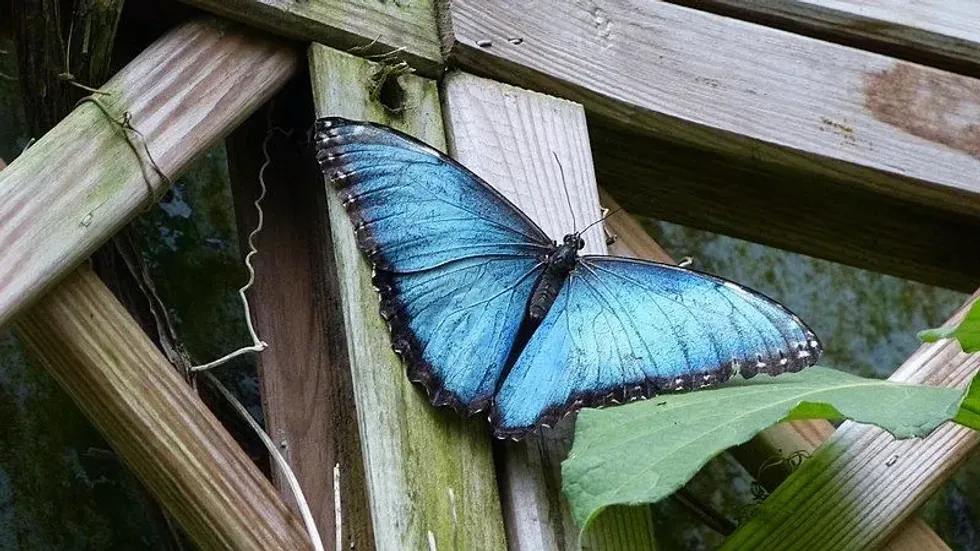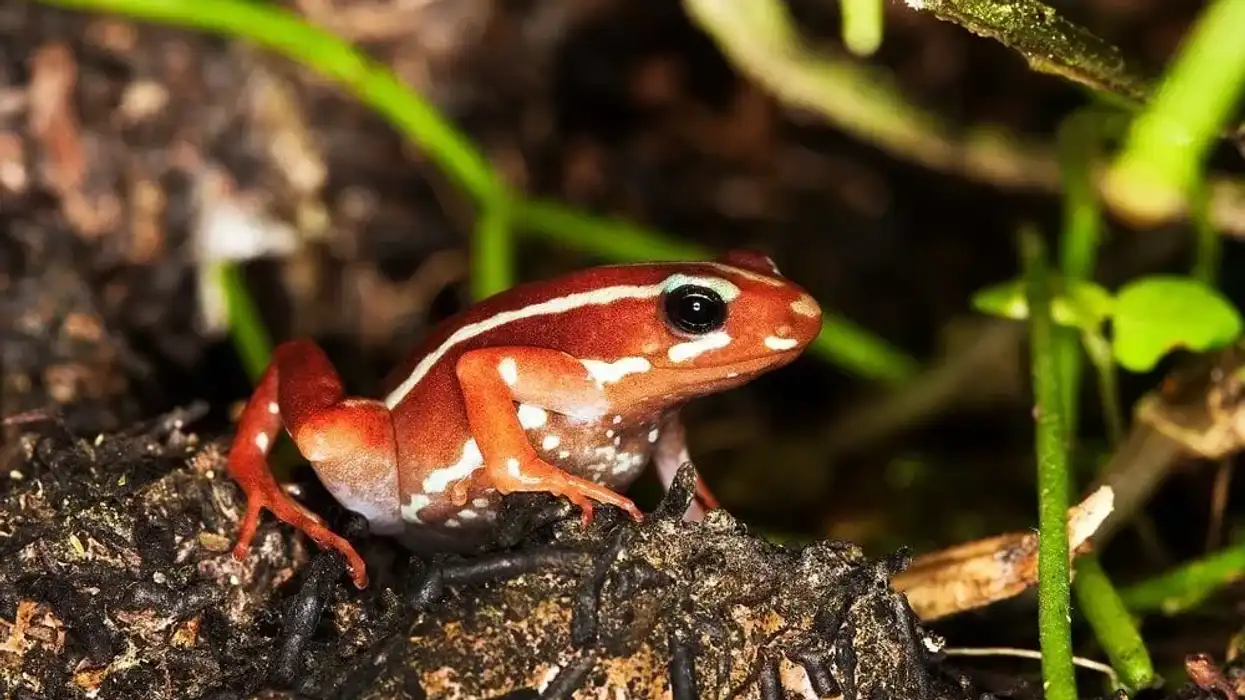In nature's quest to create unique creatures, it really outdid itself with the Blue Morpho butterfly! These blue butterflies are primarily found in Ecuador's rainforests, and their long natural history continues to amaze humans.
Their primary appeal is their blue color wings, which seem to change color in the light.
In fact, people are so enchanted by their wing color, its effect in the light, and these butterflies in general, that the government of Ecuador had to declare these butterflies as exotic species. Because of this declaration, keeping them as pets or showpieces became illegal, and they could not be captured for their unique color of wings.
Aside from their wings, these butterflies are also well known for their wingspan which can go up to 8 in!
These butterflies are some of the largest around, second to only one other species. Even as caterpillars, their large size, and absence of vivid color continue to confound scientists and researchers alike.
Do you want to read about Blue Morpho butterfly interesting facts and Blue Morpho butterfly fun facts? Then look no more, and read on. If you have had your fill of Blue Morpho butterfly facts, then do not forget to check out monarch butterfly and Morpho Butterfly.
Blue Morpho Interesting Facts
What type of animal is a Blue Morpho?
The Blue Morpho butterfly (Morpho peleides) is a type of butterfly.
What class of animal does a Blue Morpho belong to?
Blue Morphos (Morpho peleides) belong to the arthropod species.
How many Blue Morphos are there in the world?
Due to the lack of research on Blue Morpho butterflies (Morpho peleides), there is no fixed number of the population. However, it is feared that may be endangered already due to human activities.
Where does a Blue Morpho live?
The Blue Morpho butterflies (Morpho peleides) live in the tropical forest region of Latin America, central and south of South America. The adult Blue Morphos spend most of their time close to the ground, hiding in bushes, shrubs, and low-level vegetation.
What is a Blue Morpho's habitat?
The Blue Morpho butterflies (Morpho peleides) live in tropical rainforests. They usually travel in the lower levels of vegetation, with short bushes, shrubs, fruit trees, and more. They prefer areas with high humidity, low sunlight, and access to rotting fruits and trees (which form major parts of their diet).
Who does Blue Morphos live with?
The Blue Morpho butterfly (Morpho peleides) lives alone most of the time. The males and females pair up only during mating. Due to their short life span, there are no fixed mating seasons, and a male and female will mate as long as conditions are suitable.
How long does a Blue Morpho live?
The life cycle of a Blue Morpho butterfly (who belong to the order Lepidoptera) lasts about 115 days on average. This is a little over three months on a calendar year.
How do they reproduce?
The adult Blue Morpho (who belong to the order Lepidoptera) females select a variety of host plants on which they lay their eggs. When they lay their eggs, it takes around 10-12 days for the eggs to hatch and to turn into caterpillars. The males merely fertilize the eggs and leave.
What is their conservation status?
The IUCN Red List has marked this species (which belongs to the order Lepidoptera ) as Not Evaluated. Because of how difficult it is to keep track of them, scientists and researchers have been unable to research into them too well. However, they warn that these butterflies might very well be endangered in their natural habitat.
Blue Morpho Fun Facts
What do Blue Morphos look like?
When a caterpillar, this butterfly is red and green in color. When they emerge from their cocoon, they are a dull brown color with circular shapes on their dark wings These circles are usually white, cream, or a lighter shade of brown.
As they grow up, this color then fades to the brilliant light blue color they are known for, while the dark shades continue to remain on the sides. They beat these wings to scare off predators, and to attract mates.
How cute are they?
They are very cute because of their bright blue color of wings, and their naturally large size. Many people have mentioned that their scales covering their wings make them especially adorable.
However, no matter how adorable we find them, they should not be touched! They are very delicate, and humans can severely hurt them by touching any wing or body. It is much better to admire them from afar.
How do they communicate?
The Blue Morpho butterfly communicates with the chemicals it releases while moving. It does so primarily to invite females of the species to mate with them. In addition, they may also beat their wings in certain patterns and frequencies to communicate, though this is under research.
How big is a Blue Morpho?
The Morpho Butterfly is about 5-8 in wide in terms of wing span. This makes them almost as big as the Queen Alexandra's Birdwing, which is the largest butterfly in the world at 9-11 in of wing span. This butterfly is big enough to be bigger than your palm as well as your arm!
How fast can Blue Morphos fly?
The Morpho Butterflies do not fly fast enough to be recorded on any scale.
How much does a Blue Morpho weigh?
The Morpho Butterflies weigh only 0.3 oz.
What are their male and female names of the species?
There is no specific name for the males or females of the Morpho, but it does have a scientific name - the Morpho peleides.
What would you call a baby Blue Morpho?
There is no particular name for the baby Morpho.
What do they eat?
The adult butterflies of the Morpho species primarily eats fruit juices and tree sap. When they are caterpillars, they consume toxic leaves and roots to ward off predators in the future.
Are they harmful?
Not at all. The Morphos are not harmful to humans. However, they are poisonous to those who eat them. This is because when they were caterpillars, they consume a lot of toxic plants, which makes them poisonous when they become adult butterflies.
Would they make a good pet?
Due to these butterflies and their status as an exotic species in Central and South America, the adult Morphos are illegal to have as pets in many parts of the world. Only pre-approved farmers are allowed to have the Morphos to increase their population since many do not age to be adults, and die as caterpillars.
Did you know...
If you ever see one of these majestic butterflies, be careful not to touch their wings! Their wings are made of translucent, overlapping scales that refract the light around them.
These scales are so delicate, that if you touch them even once, you can knock off some of them which will weaken the integrity of the scales and in extension, their ability to fly. This might make them vulnerable to predators.
Why are Blue Morphos blue?
The reason the Morphos are blue is because of the fact that they have multiple, microscopic scales on their wings instead of a unified skin.
These scales overlap over one another and form the popular iridescent blue these butterflies are known for. When light is cast on them, they reflect and refract this light, giving the impression of them having their famous iridescent wings.
So, when you next draw these butterflies, you should highlight the scales, and draw big, prominent wings, with their smaller, black body and two antennae to go with them.
Are Blue Morphos at risk?
The population of these beautiful butterflies has not yet been evaluated. However, they face several threats, all of them man-made. Not only are they losing their habitat to deforestation, but humans also take their wings to make jewelry and showpieces. They have very few natural predators. This is because of their big wings, which allow them to escape predators.
Here at Kidadl, we have carefully created lots of interesting family-friendly animal facts for everyone to discover! Learn more about some other arthropods, including purple emperor butterfly, or luna moth.
You can even occupy yourself at home by drawing one on our Blue Morpho coloring pages.










